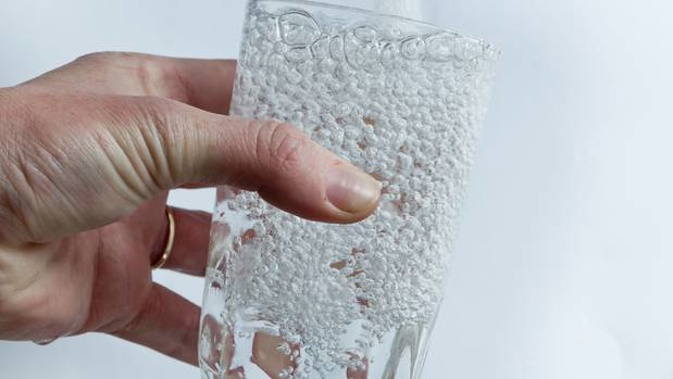
It was called the Tasman Tempest. The storm dumped a month's worth of rain on Auckland and the Coromandel in a single day.
It cost insurers $62 million. Claimants included 6450 homeowners. Also at risk was Auckland's drinking water.
Aucklanders heeded calls to save water and few realised how close the city came to a boil-water notice, with all the reputational and economic consequences to the tourism sectors that come with it.
Watercare, the council-owned company charged with providing safe drinking water and treating Auckland's wastewater, had a problem it hadn't seen before. The Ardmore treatment plant that processes the bulk of Auckland's water (plants at Huia, Waitakere and Tuakau do the rest), virtually stopped working in the middle of the night.

The plants run automatically unless they sense trouble. In the midst of the deluge 12 months ago, Ardmore's sensors detected that the amount of silt in the water washing in from the catchment in the Hunua Ranges was beyond what it could cope with. And it virtually shut up shop.
"The Ardmore water treatment plant was not designed for that raw water quality because it [the storm] was unprecedented," says chief executive Raveen Jaduram.
"So staff had to take it off autopilot and run it manually. The result was to reduce capacity to enable the water that was put through to be processed properly."
"We use devices like salad spinners that use centrifugal force to separate out silt. And we have presses, and you end up with cakes of solid material, like tiles."
Simply, the Tasman Tempest meant many more tile-like cakes were produced per unit of clean water and less clean water could be produced.
The storm exceeded anything on record, an estimated 1-in-500-year storm in the area where the city collects its water, says Jaduram. Twice the amount of water fell on the Hunua Ranges than during Cyclone Bola in 1988. There was water everywhere but hardly a drop to drink.
Chopping down trees in the Hunua Ranges was part of the problem. Without the forest to hold the earth together, vast amounts of soil washed into the catchment reservoirs turning them muddy brown.
Watercare has since bought a 1900ha private pine forest in the catchments of two of the four reservoirs in the Hunua Ranges which together provide two-thirds of Auckland's water.

The Hunua dam operated by Watercare shows excess levels of silt following heavy rains in March last year. (Photo/File)
The land is owned by Auckland Council but the cutting rights were sold by the old Auckland Regional Council to a forestry business.
"The catchment is very important to managing the quality of the water. We have bought those cutting rights so we are controlling that now. Our intention is to put native trees back and then hand it back to Auckland Council and it will remain a native forest rather than a commercial forest operation."
As well as eliminating problems that come with deforestation, having control removes issues such as pesticide spraying that come with commercial operators. But the full benefit of the planting programme is decades away as the current rotation of pine trees won't all be harvested until about 2045.
Climate change increases the likelihood of extreme weather, including rainfall. Research cited by Niwa predicts there will be up to 8 per cent more intense rain for every 1C of warming.
Jaduram, a career waterworks professional who became chief executive of Watercare in 2014, is nonetheless upbeat. "We have upgraded the Ardmore plant so if the Tasman Tempest occurred next week, we are prepared."
Two terms are frequently used by water people - resilience (ability to recover quickly from difficulties) and capacity (maximum output).
The upgrades to Ardmore are about resilience, improving its ability to handle silt. But the plant was built in 1956 and its capacity is static. When you consider that it processes 60 per cent of the city's water, you realise how important the old plant is.

Watercare chief executive Raveen Jaduram talks about the safety and risks to Auckland's water delivery system. (Photo/Greg Bowker)
The next biggest is the Waikato River treatment plant at Tuakau (about 30 per cent), followed by the 90-year-old Huia treatment plant that processes water from dams in the Waitakere Ranges.
"We have got very little room to move if there is a problem with Ardmore," Jaduram acknowledges.
Meeting growth
Watercare must be ready not just to cope with more regular extreme weather but also to supply a rapidly-growing city. Currently, Auckland adds 45,000 thirsty mouths a year.
Its long-term plan is based on the medium growth projections by Statistics New Zealand of 23,000 people a year over the next 30 years.
The plan has two planks, explains Jaduram: encouraging efficient use - what he calls "demand management" - and increasing capacity. All up, more than $300 million worth of projects aimed at increasing capacity are planned for the next decade out of a total spend of $2 billion on water supply (wastewater has a separate budget).
At $605 million, renewing or replacing the Huia plant is the biggest single item but, while it will be modern, it won't process more water than the present one.
Jaduram says that right now Watercare can supply another 55,000 homes and expansion over the next decade will provide capacity for a further 155,000 homes. "We are ahead of the curve," he assures.
Developing the capacity of the Waikato River treatment plant is the biggest single project to boost drinking water capacity.
Sleepless nights
Jaduram earlier told the Herald that to guarantee 100 per cent reliability of water supply would require building an additional water treatment plant along with consent for more water from the Waikato in the event Ardmore or another big treatment plant failed.
There is no current plan to build a major additional treatment plant, so it seems inevitable that Auckland will become more reliant on water from the Waikato.
Auckland first tapped into the Waikato River following a drought and water rationing in 1994. Watercare was charged with safeguarding the city from a one-in-200-year drought and consent was gained to take up to 150 million litres of water a day from the river.
What was initially an insurance policy against Auckland's reservoirs again becoming critically low is now an essential supply. As it is the most expensive of the water sources it was used sparingly. "We have to use it now, such is demand," says Jaduram.
The lakes are currently about 90 per cent full. "They are our bank," he says. "We will use it because it is our lowest cost water but at some point, we will decide not to drop it any lower and so will start using Waikato River water and save the reservoir for a sunny day."
More river water will be needed towards the end of the 2020s. Watercare applied last year to the Waikato Regional Council to take a further 200 million litres a day to cover future growth. The application is yet to be heard but Jaduram says that making it well in advance of the need helps him sleep at night.
He notes that Watercare has a good relationship with Tainui and hapus along the river and gives money to the charitable trust that does planting and fencing along the riverbanks. And, he is optimistic that Waikato resentment about Auckland drinking its river has faded. "They used to say 'flush twice, Auckland needs our water!'."
On the topic of worries, Jaduram mentioned that "we are slightly challenged" because Auckland Council has a problem with its balance sheet.
That concern relates to stormwater and dirty beaches. The council owns Watercare but by law can't receive dividends from it. Watercare is funded by its charges and borrowing, which at $1.5 billion is low compared to its asset value of $9b. Its mission is to supply water to homes and businesses and take and process wastewater as efficiently as possible.
Dirty beaches
The Council is responsible for the city's stormwater system which is funded by rates.
Beach closures due to pollution occur almost every time it pours. Most closures are due to runoff from roofs, roads, and paths.
Sewage is added to that mix in old parts of Auckland - from St Marys Bay through Mt Albert and Mt Eden - where no stormwater system was put in at the outset. When it rains, stormwater from roofs and gutters goes into the wastewater pipe in those areas. "And that pipe was designed 100 years ago to overflow into Meola Creek," says Jaduram. Meola and nearby creeks spill into the Waitemata Harbour off Westmere.
The fix is the Central Interceptor, a four-metre wide, 13-kilometre long tunnel which, with related pipework, will take the storm and wastewater from those problem areas to Mangere for treatment. For that, Watercare is budgeting $1.855 billion during the next 10 years.
"We are saying that will reduce overflows by 80 per cent in that problematic catchment. And Auckland Council is going to put some investment in to increase that number."
A proportion may come from a targeted rate for water that Auckland Council recently said most people it surveyed support. A proposed rate of about $1.30 a week for the average household would generate $400 million.
But that will improve the problem only in the old parts of the city where storm and wastewater mix. "Beaches still get closed on the North Shore but that is not because of wastewater."

Auckland Council is responsible for the city's stormwater system and when that is overloaded, after almost every downpour, beaches are closed. (Photo /File)
Take your Radio, Podcasts and Music with you










